RGB and CMYK (Part 1/a)
RGB
- Stands for RED, GREEN, BLUE
- Additive – This means that by adding colour, we create light. It starts out as black and by adding red, green, and blue light to pixels, they produce a spectrum of colours. Based on the placement of these tiny pixels, we perceive many different colours even though they are only made up of these three colours. As more colour is added, it gets lighter. When all three colours are combined equally at full intensity, we get white light.
- Used for digital design / viewing digitally on a screen which emits light (television, computer, phone, tablet, etc.)
- Produced with light and mixing light. When no light is present, we perceive black.
- Broad colour range
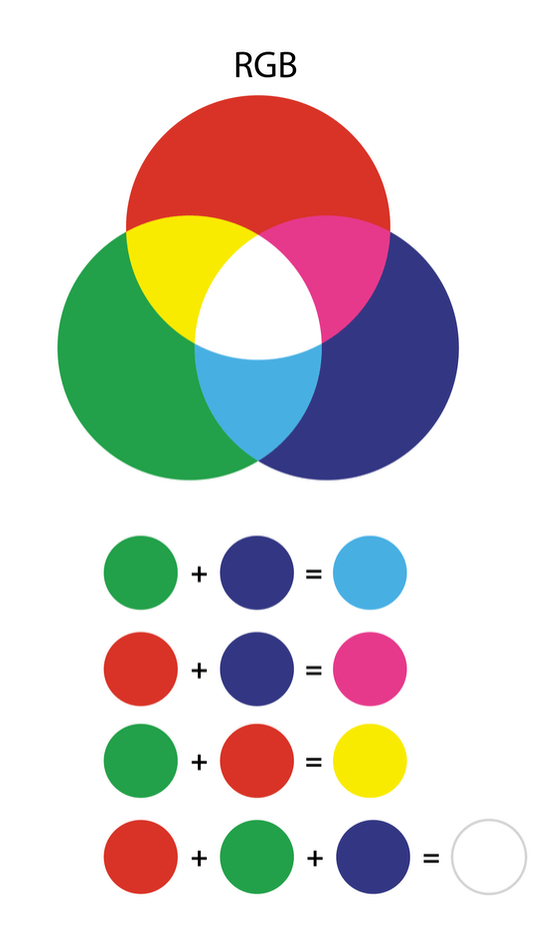
CMYK
- Stands for CYAN, MAGENTA, YELLOW, KEY (BLACK)
- Subtractive – Starts out as blank white and by adding colour, we remove light to create a range of colours.
- Used for printing / viewed on materials which reflect light (posters, banners, brochures, cards, t-shirts, etc.)
- Produced with pigment and mixing pigment. When all three colours are combined equally, all of the light is subtracted and we perceive black. Because this may not be a pure black, black ink is also added to printers to create a true black and to save ink.
- Limited colour range compared to RGB
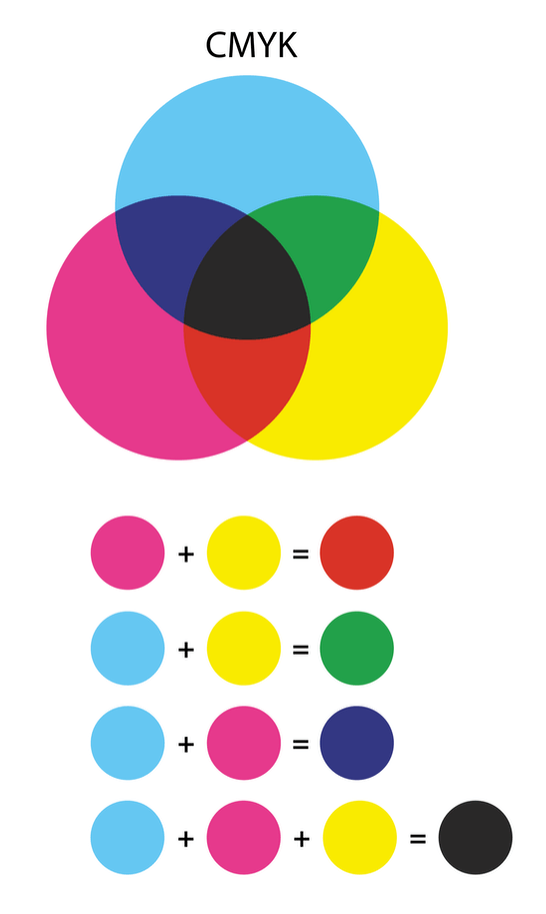
- Cyan is opposite Red
- Magenta is opposite Green
- Yellow is opposite Blue
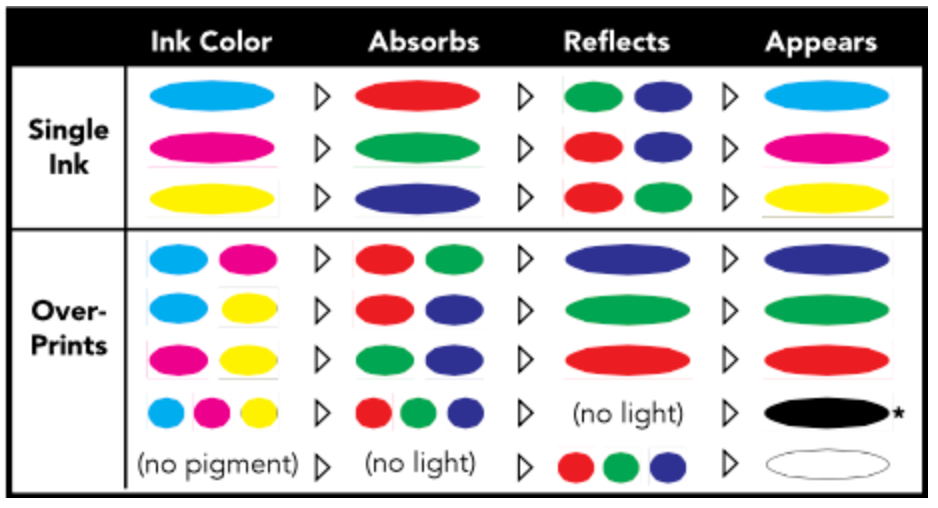
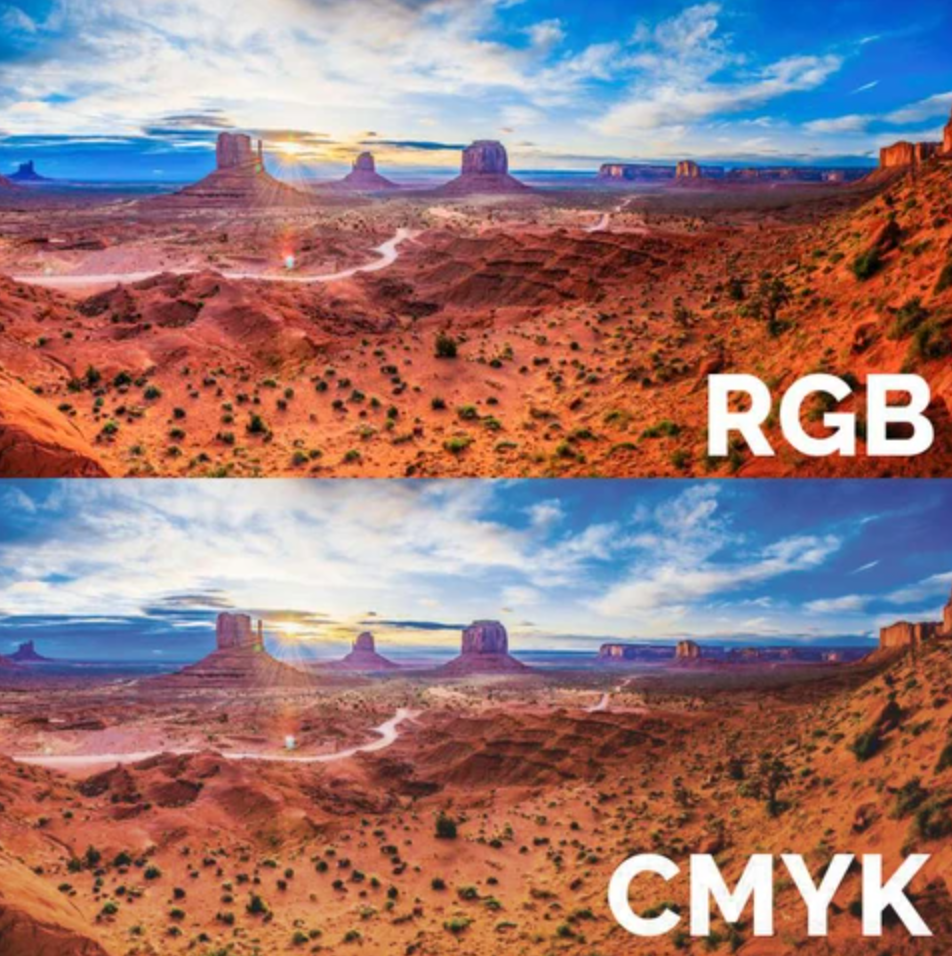
Photo Source” xhttps://saxonprint.com/blogs/design/178541319-cmyk-vs-rgb
Developing 4 colour schemes in Adobe Colour (Part 1/b)
Monochromatic
Uses variations of one colour which are created by adding black – these are called shades, adding gray – these are called tones, or adding white – these are called tints.
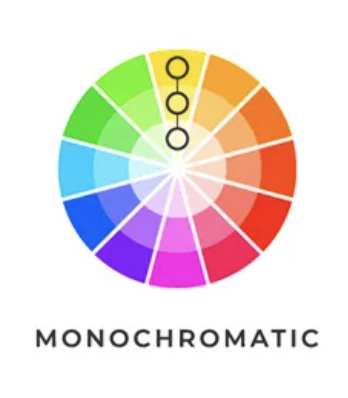
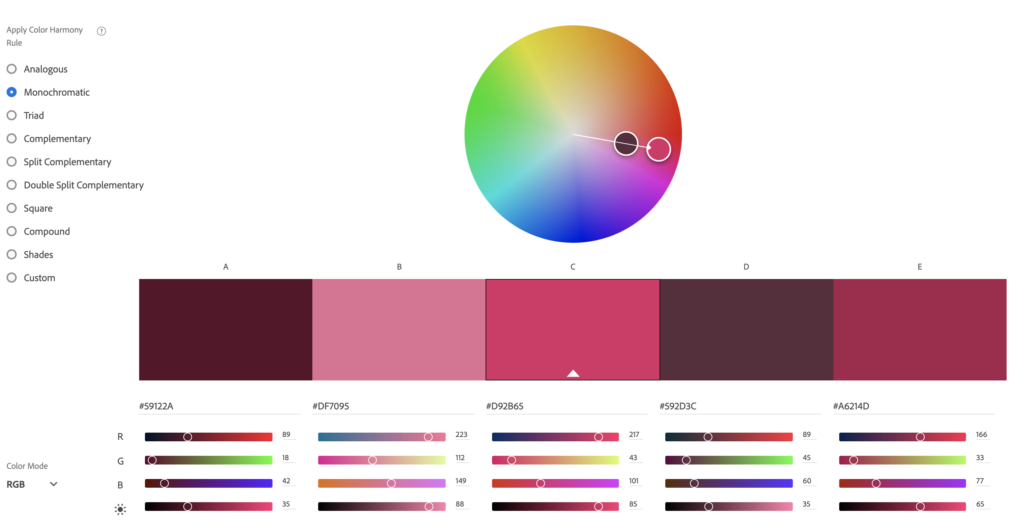
Shades of one colour would also be monochromatic.

Complementary
Colours located opposite of each other on the colour wheel (yellow-purple, blue-orange, green-red).
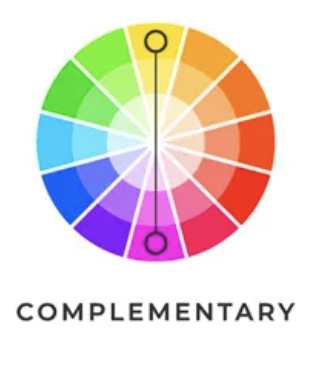
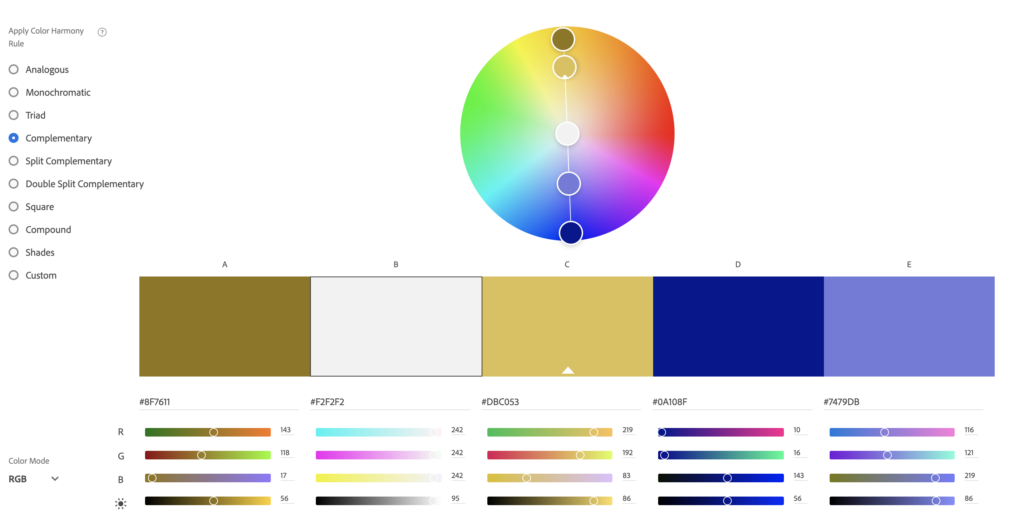
Tetrad
Any 4 colours that form a rectangle and are equally placed on the colour wheel. They include two sets of compliments.
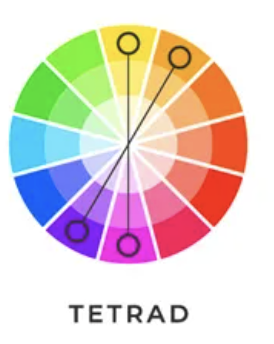
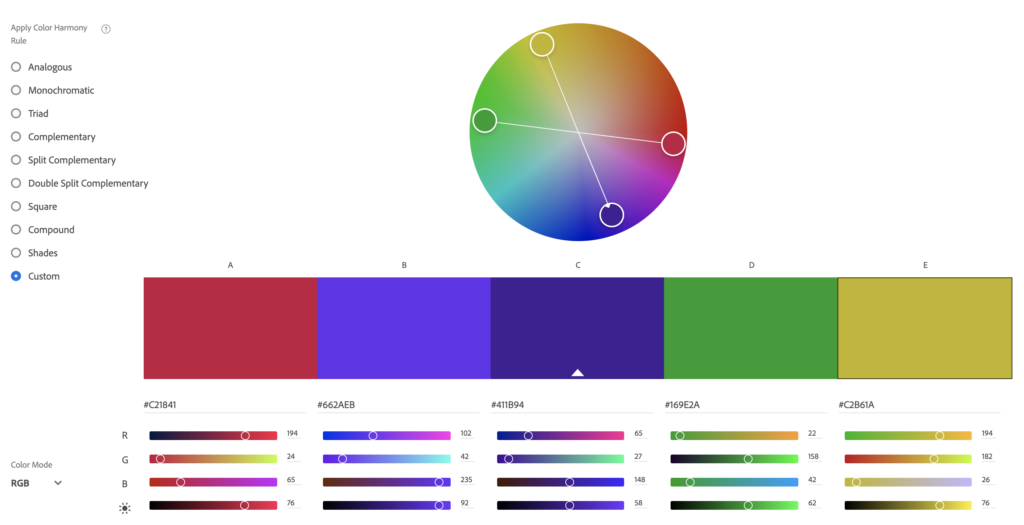
Analogous
Colours next to each other on the colour wheel. Usually they match each other well, but provide little contrast when used together.
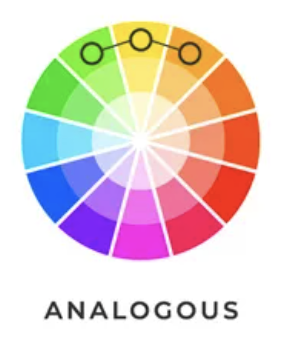
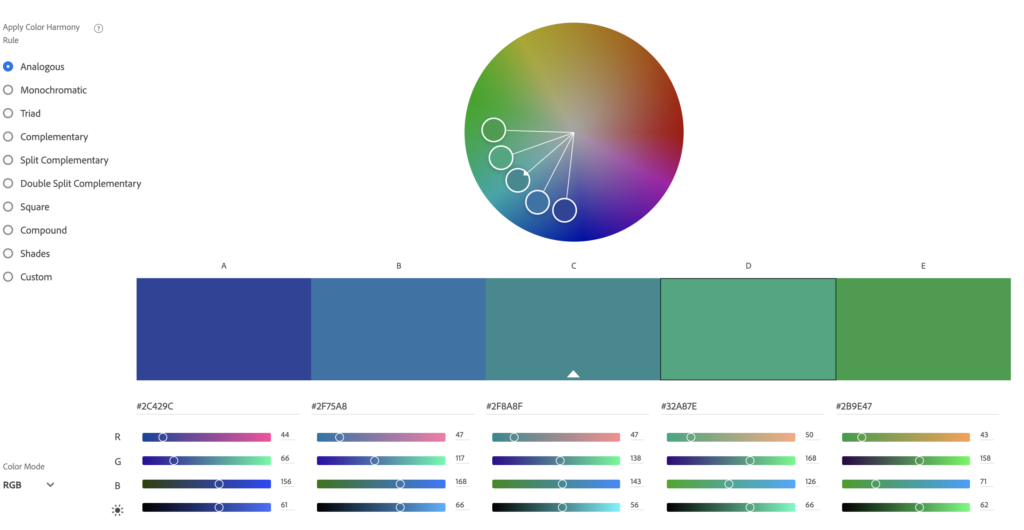
Image source for small colour wheels pictured above: https://lexoctane.com/?p=13586
Adobe Colour: https://color.adobe.com/create/color-wheel
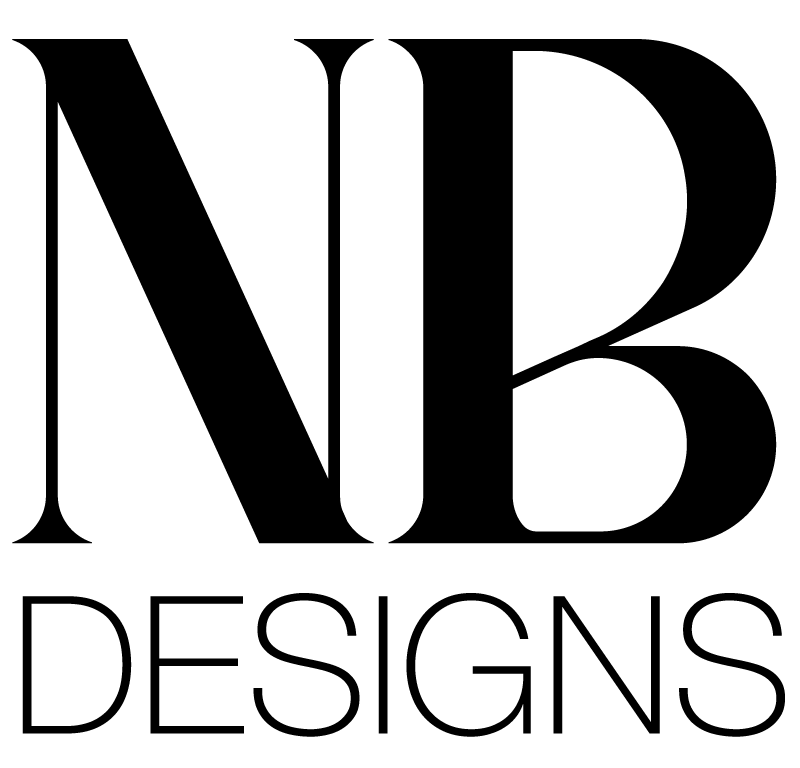
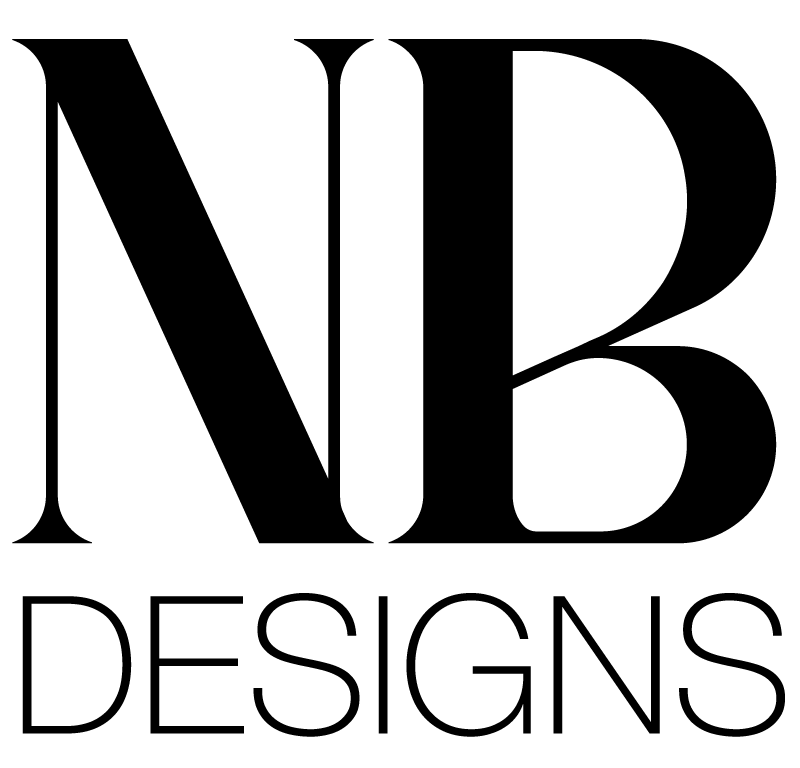
No responses yet